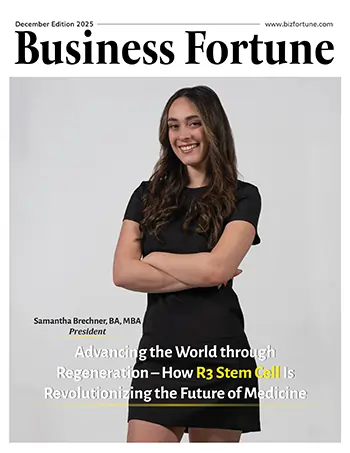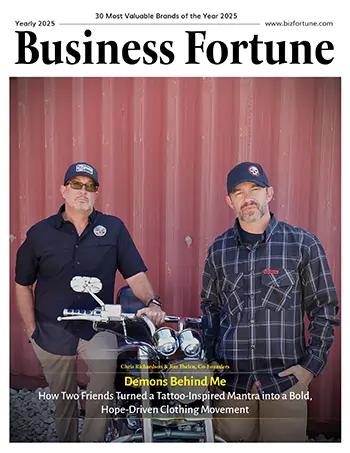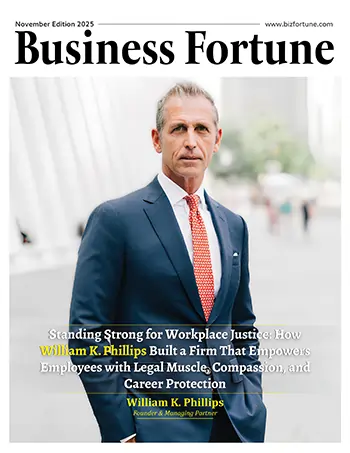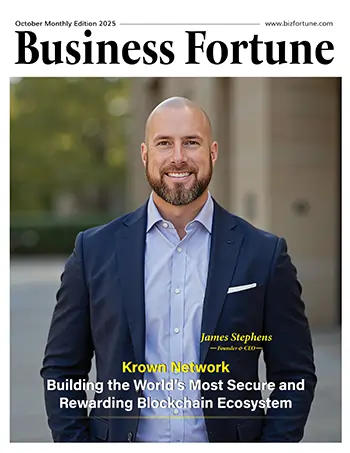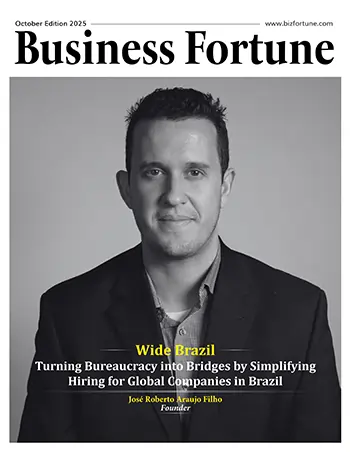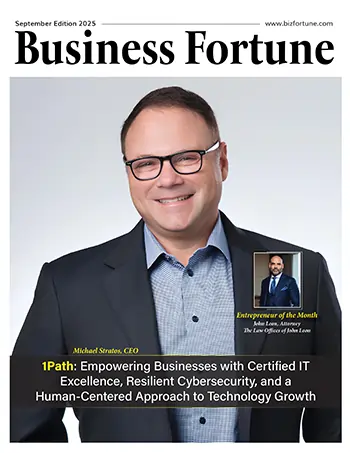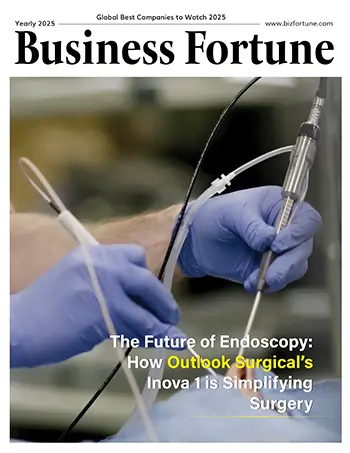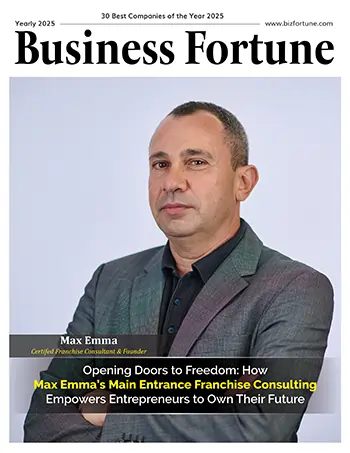Home Innovation Mobile Smartphones of Tomorrow: How M...
Smartphones of Tomorrow: How Michael Belhassen's Product Design Engineering Expertise Shapes the Future of Mobile Innovation
Mobile
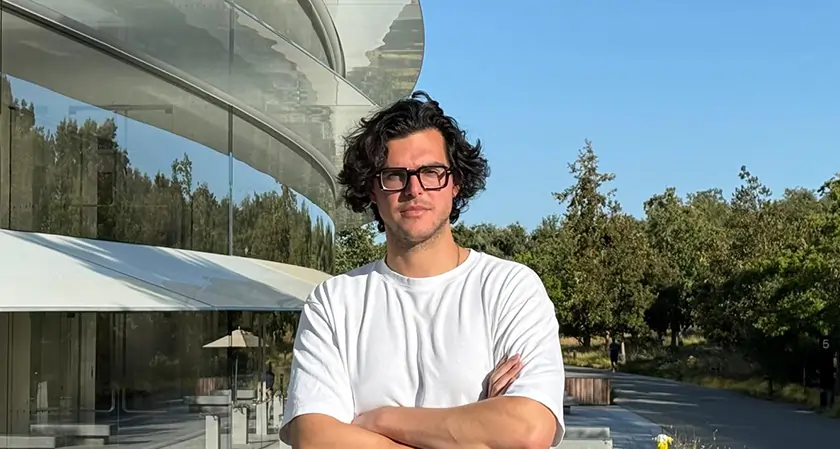
Business Fortune
01 July, 2025
By- Violet Torres
Every time you press the power button on your phone, dozens of integrated systems work in perfect harmony. Tech professionals coordinate electrical circuits, mechanical components, and manufacturing processes across multiple disciplines. The real challenge is ensuring that everything works reliably for millions of devices while maintaining a seamless user experience.
Michael Belhassen, 26, is a product design engineer at Apple who has worked on exactly these integration challenges across several iPhone iterations.
"My passion for engineering sparked early, largely inspired by Steve Jobs and his philosophy of blending technology with design to create transformative products," Belhassen explains.
His work focuses on the iPhone, a leading product in the consumer electronics industry. Belhassen integrates mechanical engineering within the iPhone's increasingly complex architecture, driving innovation on a global scale.
Belhassen is intrinsically involved in advancements in acoustics, haptics, and enclosures, which often set trends. Competitors frequently adopt elements from Apple products, shaping the industry.
He brings the perfect mix of mechanical engineering expertise and a knack for cross-disciplinary collaboration to the table. This French-born, London-raised innovator is shaping the future of mobile innovation, delivering products that millions rely on daily. His journey tells a story—from a childhood dream which he made into a reality which has resulted in him leading groundbreaking projects at Apple.
Now, his influence reaches beyond the tech company’s walls. As well as his work at Apple, Belhassen serves as a highly regarded judge for the Technology section of The Globee Awards, where he evaluates innovative products and technologies.
From Childhood Dreams to Apple Reality
Belhassen's passion for product design was ignited early: "By age six or seven, I was captivated by consumer electronics—watching keynotes, diving into YouTube videos about new phones, and dreaming of working at a place like Apple."
His technical curiosity wasn't just theoretical. While most children that age are still figuring out Lego, he built a computer from scratch, as well as a 3D printer. He was driven by his curiosity, which led him to explore what many children wouldn’t even think could be possible.
A pivotal moment came when, at around 12 years old, he visited Apple's campus in California with his family. During the visit, he told his father: "This is where Steve Jobs works, and I want to work here someday."
His father's response: "If you put in the work, there's no reason you can't achieve that."
It was this moment that set the trajectory for his career. It drove Belhassen to pursue a Master's in Mechanical Engineering at Imperial College London, where he graduated with First Class Honors in 2021. He now applies this skill at Apple, precisely where that young boy dreamed he'd end up.
At 17, during a gap year, Belhassen worked at an augmented reality startup, during which time they took part in the iconic 3-month NFX startup accelerator in Palo Alto: "I was deeply involved, not just doing grunt work, but as a contributor leading investor meetings," he recalls.
In 2018, despite being a first-year student, Belhassen applied for an internship at Apple with the prestigious iPhone Product Design team. The VP at the time, Tang Tan (an Imperial alumnus), took a chance on him. That summer, he interned on the iPhone team. Worked 18-hour days to prove himself. His subsequent internships showcased his versatility and initiative.
Initially, Belhassen worked on system sealing strategies on the iPhone team, followed by the magnetic charging ecosystem before the launch of the iPhone 12. Later, as part of the Apple Watch team, he led a self-proposed project involving the research and design of extendable PCB solutions, which he tested using a custom-built evaluation setup, given that it was during the COVID-19 pandemic and things were remote. This work contributed to his transition to a full-time iPhone Product Design Engineer role. He now leads transformative projects.
Mastering the Art of Integration
As a product design engineer at Apple, Belhassen has a role that, in his words: "Uses mechanical engineering to orchestrate form, function, and hardware integration into seamless, tangible high-performance consumer devices."
His unique expertise lies in his ability to bridge the gap between engineering and product design. Ensuring seamless integration of complex systems.
His passion for the work originates from three core aspects:
-
He enjoys transitioning from concept to physical product—taking an idea like a new speaker or haptic engine and developing it into something millions of people will use.
Belhassen further explains: "From a mechanical engineering perspective, this involves sketching out an initial vision, understanding the technical requirements, packaging components into modules and integrating them into the larger system all whilst maintaining the highest quality standard —all culminating in that moment when you press the power button, and it works flawlessly."
Belhassen takes pride in owning critical components. He says: "I currently drive future iPhone enclosure developments. The enclosure is the external and internal frame that holds everything together. Leading the development of this component means collaborating with experts in machining, injection molding, tooling, materials, and more."
-
Working with cross-disciplinary experts is incredibly rewarding. Mechanical engineering at Apple isn't done in isolation.
-
Belhassen interfaces with material scientists, automation specialists, and reliability engineers daily. Learning from their expertise and integrating it with his knowledge of complex mechanical systems creates a dynamic, collaborative environment that energizes him.
Belhassen worked on the end-to-end design of the iPhone 15 Pro's speaker and haptic engine systems. These are among the most space-constrained and challenging modules in the iPhone architecture due to their sensitivity to noise and other environmental factors that can impact their performance. Through his technical leadership, he not only ensured a successful launch but also brought performance gains that exceeded the team’s initial expectations. To bring his ideas to life, he utilized sophisticated CAD tools.
This innovative approach to complex engineering challenges has earned recognition from colleagues who work closely with him.
Tomer Cohen, who is a Senior Defence Industry Product Consultant, first worked with Belhassen when he came to do an internship at his company RideOn in 2017. The company created enhanced augmented reality solutions for extreme sports enthusiasts. They worked together for about a year and continue to collaborate today. He reveals Belhassen’s expert skills which are now utilised through his work with Apple, were honed early on.
Cohen recalls: “Michael’s honesty helped us refine our market delivery, turning potential setbacks into actionable improvements.
Professionally, he treats others with respect and collaboration, fostering environments where ideas flourish.
“I admire Michael's values of innovation, honesty, high work ethic, and moral integrity, which shine in his product design skills.
“He's a visionary realist—combining cutting-edge ideas with practical implementation. For example, his battery suggestions balanced advanced tech with user comfort, ensuring our AR goggles were innovative yet intuitive, without making users feel "weird" about adopting them.”
Cohen says Belhassen was also able to showcase how being successful at product design is not just about the product itself: “He was an invaluable asset when it came to expanding and financing the company.
“Michael’s directness and ability to "read the room" enabled him to lead effectively in high-pressure environments. Despite his young age, he joined VC meetings and provided debriefs afterward.
“Professionally, he treats others with respect and collaboration, fostering environments where ideas flourish.”
Jag Dhillon, a Product Design Engineer who has worked with Belhassen, has also seen these superior skills in action: "His problem-solving skills are top-tier. In product design, we face complex challenges every day—such as components breaking unexpectedly or developing systems with brand-new specifications.
“Michael and I often jump into brainstorming sessions together. He's great at generating creative solutions, even when tackling problems that no one has encountered before. His ability to navigate such innovation is impressive. First, his attention to detail is unmatched—he doesn't stop at 99%, he pushes for that last 1%, that perfection, even if it takes significantly more work."
Harlan Dannenberg, a Product Design Engineer who works with Belhassen, says he is dedicated with expertise that far surpasses others in his field: "He's not only super supportive, but also has a crazy good work ethic,” he says.
“His support for his team shows itself very frequently. And Michael is very hands-on. He takes on a lot of work that is urgent and important, and helps drive major decisions for our products.”
Dannenberg adds: “He's always open to trying new things and learning new things, which is important. He fundamentally understands what you are trying to deliver to customers, and then he can stand up for the product and be a strong voice using his expertise."
This approach has been reflected in Belhassen’s close work with the manufacturing side. He has collaborated with teams in China to streamline production. This involved incorporating Design for Manufacturability principles to ensure the designs could be produced at scale.
As a result of his manufacturing and tooling expertise, Belhassen led the implementation of novel green molding processes on iPhone. This was a substantial technical and environmental milestone: "This involved developing new methods to produce small, injection-molded parts with minimal waste," he explains.
The optimized tooling reduced material waste, equivalent to removing the emissions of approximately 2,000 cars annually.
Additionally, Belhassen notes that Apple is also prioritizing green manufacturing techniques: “As industry leaders, our focus on environmental impact has influenced others to adopt more sustainable practices, even when it’s not required.”
Leading Apple's iPhone Enclosure Research
Belhassen is currently leading forward-looking enclosure initiatives. The enclosure houses all internal components and requires careful attention to mechanical engineering principles. His work explores new approaches to structural integration, thermal management, assembly optimization, reliability, and process automation.
Belhassen’s ability to operate across technical domains and coordinate with cross-functional teams — including tooling, manufacturing design, and manufacturing quality — has been instrumental in driving this research forward.
Belhassen says: "We’ve been researching ways to expand our design and engineering toolkit for future products. The mechanical engineering challenges are immense but incredibly rewarding."
Addressing real-world user frustrations drives much of Belhassen's current work: "Recently, I've focused on the iPhone's reliability,” he shares.
“The work has included optimizing the enclosure architecture to enhance durability without compromising user experience."
This would directly address user concerns about dropping their devices.
Belhassen's work on the iPhone 16 Pro's studio-quality microphones is another project he's particularly proud of: "This was a multi-year effort to integrate microphones capable of professional-grade audio recording into a device as compact as a phone.”
These projects require navigating complex technical challenges while coordinating across multiple engineering disciplines. It showcases why his highly sought-after skills are in demand.
Collaboration Unlocks the Biggest Breakthroughs
Belhassen approaches engineering challenges by balancing technical expertise with broader product considerations: "I think I can balance deep technical expertise with a wider perspective,” he reveals.
“Mechanical engineering can be hyper-focused—say, on system integration or assembly design for manufacturing —but I've learned to step back and consider the product holistically.
“For instance, when designing a new module, I think about how it impacts user experience, manufacturing feasibility, and even sustainability."
This approach helps him solve complex mechanical engineering problems: "If there's a mechanical design issue—like a system failure under specific conditions—I won't stop until I've explored every possible cause, from part quality to material conditions," he reveals.
Belhassen employs rigorous testing methodologies. These include simulations, reliability tests and failure analysis, which are used to validate designs that must perform flawlessly across Apple's massive production scale.
Collaboration is another important factor: "Being able to work with experts in machining, injection molding, operations, and reliability is one of the greatest things about my job," Belhassen says. Leading cross-functional teams, he aligns diverse perspectives towards a common goal. A skill honed during internships and now critical to his leadership.
Outside of work, Belhassen enjoys music, martial arts, fishing, swimming, piano, tennis, and basketball. This showcases a well-rounded approach to life that informs his holistic problem-solving methodology.
Through Apple's Mentorship programs, Belhassen has mentored over 30 interns and employees. He also judges hackathons in San Francisco and mentors teams working on IoT and wearable projects.
User Impact is Key
Belhassen’s driving purpose is clear: "My 'why' is the opportunity to improve people's lives through technology,” he says.
“Whether it's enabling a musician to record studio-quality audio with their iPhone or ensuring a phone remains reliable after a drop, my mechanical engineering work makes a tangible difference.
“Knowing that millions rely on the products I design motivates me to push the boundaries of what's possible. It all comes down to user impact. That's the thread running through everything.”
He adds: "My work ensures that users get a reliable, high-performance device that enhances their daily lives without them noticing the complexity behind it.
"For example, my contributions to the iPhone's enclosure and microphone systems mean users can be less worried about dropping their phoneor record professional-grade audio on the go."
Belhassen's work on the iPhone 15 and 16 Pro, enabling professional-grade audio in a pocket-sized device, exemplifies his ability to empower users.
Future Goals
Colleagues who have worked closely with Belhassen consistently highlight his visionary approach and leadership qualities.
Saad Haq, another Senior Product Design Engineer who has worked with Belhassen, shares his perspective: "The number one thing I admire is his drive,” he reveals.
“Michael has a clear vision for what he wants to achieve in his career and life, and he works incredibly hard toward that. It's honestly inspiring.”
Haq adds: “One of the biggest is his ability to step back and look at the bigger picture. In tech, it's easy to get caught up in day-to-day tasks or focus on climbing the corporate ladder.
“But Michael constantly engages in high-level thinking about the future of tech—where it's headed and how it can better serve human connection. First, he's a fantastic team player. In engineering, people often rely too much on their own expertise or ego, but Michael sets that aside."
Belhassen's work at Apple exemplifies how mechanical engineering expertise can enhance the development of consumer products. His focus on user experience and cross-functional collaboration reflects the collaborative nature of modern product design.
There is no doubt Belhassen has achieved the goal he set as a youngster when he visited Apple's campus. He is now one of the most respected Product Design Engineers on the iPhone team, contributing to the development of the most widely used consumer devices in the world.
And it fits neatly into Belhassen's dream for the future, which is no less ambitious than the one he set himself all those years ago: "Today, our phones can pull us away from human connections and I want to shift that paradigm,” he reveals.
“I want to be part of the team that uses mechanical engineering to design systems that enhance productivity without consuming our attention. Achieving that in the next 10-20 years would be my proudest legacy."



























